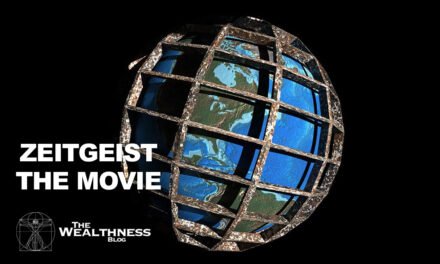Loose Change: Final Cut – Fueling Conspiracy Theories in a Post-9/11 World
In the aftermath of the 9/11 attacks, a climate of fear, anger, and distrust permeated American society. As the nation grappled with the devastating loss and sought answers, a growing number of individuals found themselves questioning the official narrative put forth by the government. It was within this environment that the controversial documentary film “Loose Change: Final Cut” emerged, igniting a firestorm of debate and fueling the rise of the 9/11 Truth movement.
Released in 2007, “Loose Change: Final Cut” was the culmination of a series of films produced by Dylan Avery, a young filmmaker who had become increasingly skeptical of the government’s account of the events surrounding the September 11th attacks. Avery’s previous iterations of “Loose Change” had gained a significant following online, but it was the “Final Cut” version that truly propelled the film into the mainstream consciousness.
The Central Claims
At its core, “Loose Change: Final Cut” set out to challenge the official explanation that the collapse of the World Trade Center towers and the adjacent 7 World Trade Center building was solely caused by the impact of the hijacked airliners and the resulting fires. Through a combination of witness testimony, expert analysis, news footage, and what it claimed was corroborating evidence, the film sought to prove that the official story was false and that a far more sinister conspiracy was at play.
Among the film’s central claims were assertions that the Twin Towers and Building 7 were brought down by controlled demolitions, rather than the plane impacts and fires. It also suggested that the Pentagon was not struck by American Airlines Flight 77, but rather by a cruise missile or a different type of aircraft. Additionally, the film cast doubt on the official accounts of the hijackers’ identities and the phone calls made from the hijacked planes.
Ultimately, “Loose Change: Final Cut” posited that the 9/11 attacks were not carried out solely by Islamic terrorists but were instead an “inside job” orchestrated by elements within the United States government, potentially as a pretext for military intervention in the Middle East and the curtailment of civil liberties at home.
The Controversy and Backlash
From the moment of its release, “Loose Change: Final Cut” faced intense scrutiny and criticism from a wide range of sources, including journalists, independent researchers, and members of the scientific and engineering communities. Numerous fact-checking organizations and government agencies, such as the National Institute of Standards and Technology (NIST), conducted comprehensive investigations that directly contradicted the film’s central claims.
Critics pointed out numerous factual inaccuracies, logical fallacies, and instances of cherry-picked or misrepresented evidence within the film. They argued that “Loose Change: Final Cut” relied heavily on circumstantial evidence and speculation, while ignoring or dismissing the wealth of scientific data and eyewitness accounts that supported the official narrative.
Despite these criticisms, the film found a receptive audience among those already distrustful of the government and those seeking alternative explanations for the events of 9/11. The film’s ability to tap into existing conspiracy theories and present a compelling, if flawed, narrative contributed to its enduring popularity within certain circles.
The Rise of the 9/11 Truth Movement
“Loose Change: Final Cut” became a rallying cry for the burgeoning 9/11 Truth movement, a loosely organized collective of individuals and groups who rejected the official accounts of the attacks and advocated for a new, independent investigation. The film’s success helped to propel the movement into the mainstream, garnering attention from media outlets and prompting public discussions and debates.
However, the 9/11 Truth movement itself was not without its controversies and internal divisions. While some members focused on legitimate questions and concerns surrounding the events of 9/11, others embraced more extreme and unfounded conspiracy theories, further muddying the waters and undermining the movement’s credibility.
The Legacy of Loose Change
Despite the overwhelming evidence debunking its central claims, “Loose Change: Final Cut” left an indelible mark on popular culture and the broader discourse surrounding conspiracy theories. Its success paved the way for a proliferation of similar films and documentaries, each offering its own unique spin on various conspiracy narratives.
More significantly, the film’s popularity highlighted the growing distrust and disillusionment with mainstream institutions and narratives, particularly in the aftermath of events like 9/11 and the Iraq War. By presenting a compelling, if flawed, alternative narrative, “Loose Change: Final Cut” tapped into a desire for answers and explanations that challenged the status quo.
In many ways, the film’s enduring legacy extends beyond its specific claims and into the realm of media literacy and critical thinking. While its factual inaccuracies and misrepresentations have been well-documented, the film’s ability to captivate audiences and spark debate serves as a reminder of the importance of scrutinizing information sources and maintaining a healthy skepticism towards narratives that challenge established facts.
As the world grapples with an increasingly complex information landscape, where misinformation and conspiracy theories can spread like wildfire, the lessons of “Loose Change: Final Cut” remain relevant. It serves as a cautionary tale about the dangers of unchecked speculation and the importance of rigorous fact-checking and critical analysis.
Ultimately, the true value of “Loose Change: Final Cut” may lie not in the veracity of its claims but in the conversations and debates it has sparked – conversations that challenge us to question our assumptions, scrutinize our sources, and remain ever vigilant in the pursuit of truth, even in the face of compelling but flawed narratives.
Citations:









